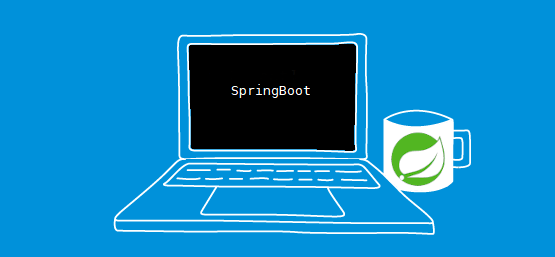从零搭建Spring Boot脚手架(2):增加通用的功能

1. 前言
今天开始搭建我们的kono Spring Boot脚手架,首先会集成Spring MVC并进行定制化以满足日常开发的需要,我们先做一些刚性的需求定制,后续再补充细节。如果你看了本文有什么问题可以留言讨论。多多持续关注,共同学习,共同进步。
2. 统一返回体
在开发中统一返回数据非常重要。方便前端统一处理。通常设计为以下结构:
{"code": 200,"data": {"name": "felord.cn","age": 18},"msg": "","identifier": ""}
- code 业务状态码,设计时应该区别于http状态码。
- data 数据载体,用以装载返回给前端展现的数据。
- msg 提示信息,用于前端调用后返回的提示信息,例如 “新增成功”、“删除失败”。
- identifier 预留的标识位,作为一些业务的处理标识。
根据上面的一些定义,声明了一个统一返回体对象RestBody<T>并声明了一些静态方法来方便定义。
package cn.felord.kono.advice;import lombok.Data;import java.io.Serializable;/*** @author felord.cn* @since 22:32 2019-04-02*/@Datapublic class RestBody<T> implements Rest<T>, Serializable {private static final long serialVersionUID = -7616216747521482608L;private int code = 200;private T data;private String msg = "";private String identifier = "";public static Rest<?> ok() {return new RestBody<>();}public static Rest<?> ok(String msg) {Rest<?> restBody = new RestBody<>();restBody.setMsg(msg);return restBody;}public static <T> Rest<T> okData(T data) {Rest<T> restBody = new RestBody<>();restBody.setData(data);return restBody;}public static <T> Rest<T> okData(T data, String msg) {Rest<T> restBody = new RestBody<>();restBody.setData(data);restBody.setMsg(msg);return restBody;}public static <T> Rest<T> build(int code, T data, String msg, String identifier) {Rest<T> restBody = new RestBody<>();restBody.setCode(code);restBody.setData(data);restBody.setMsg(msg);restBody.setIdentifier(identifier);return restBody;}public static Rest<?> failure(String msg, String identifier) {Rest<?> restBody = new RestBody<>();restBody.setMsg(msg);restBody.setIdentifier(identifier);return restBody;}public static Rest<?> failure(int httpStatus, String msg ) {Rest<?> restBody = new RestBody< >();restBody.setCode(httpStatus);restBody.setMsg(msg);restBody.setIdentifier("-9999");return restBody;}public static <T> Rest<T> failureData(T data, String msg, String identifier) {Rest<T> restBody = new RestBody<>();restBody.setIdentifier(identifier);restBody.setData(data);restBody.setMsg(msg);return restBody;}@Overridepublic String toString() {return "{" +"code:" + code +", data:" + data +", msg:" + msg +", identifier:" + identifier +'}';}}
但是每次都要显式声明返回体也不是很优雅的办法,所以我们希望无感知的来实现这个功能。Spring Framework正好提供此功能,我们借助于@RestControllerAdvice和ResponseBodyAdvice<T>来对项目的每一个@RestController标记的控制类的响应体进行后置切面通知处理。
/*** 统一返回体包装器** @author felord.cn* @since 14:58**/@RestControllerAdvicepublic class RestBodyAdvice implements ResponseBodyAdvice<Object> {@Overridepublic boolean supports(MethodParameter methodParameter, Class<? extends HttpMessageConverter<?>> aClass) {return true;}@Overridepublic Object beforeBodyWrite(Object o, MethodParameter methodParameter, MediaType mediaType, Class<? extends HttpMessageConverter<?>> aClass, ServerHttpRequest serverHttpRequest, ServerHttpResponse serverHttpResponse) {// 如果为空 返回一个不带数据的空返回体if (o == null) {return RestBody.ok();}// 如果 RestBody 的 父类 是 返回值的父类型 直接返回// 方便我们可以在接口方法中直接返回RestBodyif (Rest.class.isAssignableFrom(o.getClass())) {return o;}// 进行统一的返回体封装return RestBody.okData(o);}}
当我们接口返回一个实体类时会自动封装到统一返回体RestBody<T>中。
既然有
ResponseBodyAdvice,就有一个RequestBodyAdvice,它似乎是来进行前置处理的,以后可能有一些用途。
2. 统一异常处理
统一异常也是@RestControllerAdvice能实现的,可参考之前的Hibernate Validator校验参数全攻略。这里初步集成了校验异常的处理,后续会添加其他异常。
/*** 统一异常处理** @author felord.cn* @since 13 :31 2019-04-11*/@Slf4j@RestControllerAdvicepublic class ApiExceptionHandleAdvice {@ExceptionHandler(BindException.class)public Rest<?> handle(HttpServletRequest request, BindException e) {logger(request, e);List<ObjectError> allErrors = e.getAllErrors();ObjectError objectError = allErrors.get(0);return RestBody.failure(700, objectError.getDefaultMessage());}@ExceptionHandler(MethodArgumentNotValidException.class)public Rest<?> handle(HttpServletRequest request, MethodArgumentNotValidException e) {logger(request, e);List<ObjectError> allErrors = e.getBindingResult().getAllErrors();ObjectError objectError = allErrors.get(0);return RestBody.failure(700, objectError.getDefaultMessage());}@ExceptionHandler(ConstraintViolationException.class)public Rest<?> handle(HttpServletRequest request, ConstraintViolationException e) {logger(request, e);Optional<ConstraintViolation<?>> first = e.getConstraintViolations().stream().findFirst();String message = first.isPresent() ? first.get().getMessage() : "";return RestBody.failure(700, message);}@ExceptionHandler(Exception.class)public Rest<?> handle(HttpServletRequest request, Exception e) {logger(request, e);return RestBody.failure(700, e.getMessage());}private void logger(HttpServletRequest request, Exception e) {String contentType = request.getHeader("Content-Type");log.error("统一异常处理 uri: {} content-type: {} exception: {}", request.getRequestURI(), contentType, e.toString());}}
3. 简化类型转换
简化Java Bean之间转换也是一个必要的功能。 这里选择mapStruct,类型安全而且容易使用,比那些BeanUtil要好用的多。但是从我使用的经验上来看,不要使用mapStruct提供的复杂功能只做简单映射。详细可参考文章Spring Boot 2 实战:集成 MapStruct 类型转换。
集成进来非常简单,由于它只在编译期生效所以引用时的scope最好设置为compile,我们在kono-dependencies中加入其依赖管理:
<dependency><groupId>org.mapstruct</groupId><artifactId>mapstruct</artifactId><version>${mapstruct.version}</version><scope>compile</scope></dependency><dependency><groupId>org.mapstruct</groupId><artifactId>mapstruct-processor</artifactId><version>${mapstruct.version}</version><scope>compile</scope></dependency>
在kono-app中直接引用上面两个依赖,但是这样还不行,和lombok一起使用编译容易出现SPI错误。我们还需要集成相关的Maven插件到kono-app编译的生命周期中去。参考如下:
<plugin><groupId>org.apache.maven.plugins</groupId><artifactId>maven-compiler-plugin</artifactId><version>3.8.1</version><configuration><source>1.8</source><target>1.8</target><showWarnings>true</showWarnings><annotationProcessorPaths><path><groupId>org.projectlombok</groupId><artifactId>lombok</artifactId><version>${lombok.version}</version></path><path><groupId>org.mapstruct</groupId><artifactId>mapstruct-processor</artifactId><version>${mapstruct.version}</version></path></annotationProcessorPaths></configuration></plugin>
然后我们就很容易将一个Java Bean转化为另一个Java Bean。下面这段代码将UserInfo转换为UserInfoVO而且自动为UserInfoVO.addTime赋值为当前时间,同时这个工具也自动注入了Spring IoC,而这一切都发生在编译期。
编译前:
/*** @author felord.cn* @since 16:09**/@Mapper(componentModel = "spring", imports = {LocalDateTime.class})public interface BeanMapping {@Mapping(target = "addTime", expression = "java(LocalDateTime.now())")UserInfoVO toUserInfoVo(UserInfo userInfo);}
编译后:
package cn.felord.kono.beanmapping;import cn.felord.kono.entity.UserInfo;import cn.felord.kono.entity.UserInfoVO;import java.time.LocalDateTime;import javax.annotation.Generated;import org.springframework.stereotype.Component;@Generated(value = "org.mapstruct.ap.MappingProcessor",date = "2020-07-30T23:11:24+0800",comments = "version: 1.3.0.Final, compiler: javac, environment: Java 1.8.0_252 (AdoptOpenJDK)")@Componentpublic class BeanMappingImpl implements BeanMapping {@Overridepublic UserInfoVO toUserInfoVo(UserInfo userInfo) {if ( userInfo == null ) {return null;}UserInfoVO userInfoVO = new UserInfoVO();userInfoVO.setName( userInfo.getName() );userInfoVO.setAge( userInfo.getAge() );userInfoVO.setAddTime( LocalDateTime.now() );return userInfoVO;}}
其实mapStruct也就是帮我们写了Getter和Setter,但是不要使用其比较复杂的转换,会增加学习成本和可维护的难度。
4. 单元测试
将以上功能集成进去后分别做一个单元测试,全部通过。
@AutowiredMockMvc mockMvc;@AutowiredBeanMapping beanMapping;/*** 测试全局异常处理.** @throws Exception the exception* @see UserController#getUserInfo()*/@Testvoid testGlobalExceptionHandler() throws Exception {String rtnJsonStr = "{\n" +" \"code\": 700,\n" +" \"data\": null,\n" +" \"msg\": \"test global exception handler\",\n" +" \"identifier\": \"-9999\"\n" +"}";mockMvc.perform(MockMvcRequestBuilders.get("/user/get")).andExpect(MockMvcResultMatchers.content().json(rtnJsonStr)).andDo(MockMvcResultHandlers.print());}/*** 测试统一返回体.** @throws Exception the exception* @see UserController#getUserVO()*/@Testvoid testUnifiedReturnStruct() throws Exception {// "{\"code\":200,\"data\":{\"name\":\"felord.cn\",\"age\":18,\"addTime\":\"2020-07-30T13:08:53.201\"},\"msg\":\"\",\"identifier\":\"\"}";mockMvc.perform(MockMvcRequestBuilders.get("/user/vo")).andExpect(MockMvcResultMatchers.jsonPath("code", Is.is(200))).andExpect(MockMvcResultMatchers.jsonPath("data.name", Is.is("felord.cn"))).andExpect(MockMvcResultMatchers.jsonPath("data.age", Is.is(18))).andExpect(MockMvcResultMatchers.jsonPath("data.addTime", Is.is(notNullValue()))).andDo(MockMvcResultHandlers.print());}/*** 测试 mapStruct类型转换.** @see BeanMapping*/@Testvoid testMapStruct() {UserInfo userInfo = new UserInfo();userInfo.setName("felord.cn");userInfo.setAge(18);UserInfoVO userInfoVO = beanMapping.toUserInfoVo(userInfo);Assertions.assertEquals(userInfoVO.getName(), userInfo.getName());Assertions.assertNotNull(userInfoVO.getAddTime());}
5. 总结
自制脚手架初步具有了统一返回体、统一异常处理、快速类型转换,其实参数校验也已经支持了。后续就该整合数据库了,常用的数据库访问技术主要为Mybatis、Spring Data JPA、JOOQ等,不知道你更喜欢哪一款?欢迎留言讨论。
关注公众号:Felordcn 获取更多资讯
从零搭建Spring Boot脚手架(2):增加通用的功能的更多相关文章
- 从零搭建Spring Boot脚手架(1):开篇以及技术选型
1. 前言 目前Spring Boot已经成为主流的Java Web开发框架,熟练掌握Spring Boot并能够根据业务来定制Spring Boot成为一个Java开发者的必备技巧,但是总是零零碎碎 ...
- 从零搭建Spring Boot脚手架(3):集成mybatis
1. 前言 今天继续搭建我们的kono Spring Boot脚手架,上一文集成了一些基础的功能,比如统一返回体.统一异常处理.快速类型转换.参数校验等常用必备功能,并编写了一些单元测试进行验证,今天 ...
- 从零搭建Spring Boot脚手架(4):手写Mybatis通用Mapper
1. 前言 今天继续搭建我们的kono Spring Boot脚手架,上一文把国内最流行的ORM框架Mybatis也集成了进去.但是很多时候我们希望有一些开箱即用的通用Mapper来简化我们的开发.我 ...
- 从零搭建Spring Boot脚手架(7):整合OSS作为文件服务器
1. 前言 文件服务器是一个应用必要的组件之一.最早我搞过FTP,然后又用过FastDFS,接私活的时候我用MongoDB也凑合凑合.现如今时代不同了,开始流行起了OSS. Gitee: https: ...
- 从零搭建Spring Boot脚手架(7):Elasticsearch应该独立服务
1. Spring Data Elasticsearch Spring Data Elasticsearch是Spring Data项目的子项目,提供了Elasticsearch与Spring的集成. ...
- 从零搭建Spring Boot脚手架(5):整合 Mybatis Plus
1. 前言 在上一文中我根据Mybatis中Mapper的生命周期手动实现了一个简单的通用Mapper功能,但是遗憾的是它缺乏实际生产的检验.因此我选择更加成熟的一个Mybatis开发增强包.它就是已 ...
- 从零搭建Spring Boot脚手架(6):整合Redis作为缓存
1. 前言 上一文我们整合了Mybatis Plus,今天我们会把缓存也集成进来.缓存是一个系统应用必备的一种功能,除了在减轻数据库的压力之外.还在存储一些短时效的数据场景中发挥着重大作用,比如存储用 ...
- Spring Boot实战一:搭建Spring Boot开发环境
一开始接触Spring Boot就感到它非常强大,也非常简单实用,遂想将其记录下来. 搭建Spring Boot工程非常简单,到:http://start.spring.io/ 下载Spring Bo ...
- 使用IDEA搭建Spring Boot入门项目
简介 Spring Boot是由Pivotal团队提供的全新框架,其设计目的是用来简化新Spring应用的初始搭建以及开发过程.该框架使用了特定的方式来进行配置,从而使开发人员不再需要定义样板化的配置 ...
随机推荐
- Java实现 LeetCode第30场双周赛 (题号5177,5445,5446,5447)
这套题不算难,但是因为是昨天晚上太晚了,好久没有大晚上写过代码了,有点不适应,今天上午一看还是挺简单的 5177. 转变日期格式 给你一个字符串 date ,它的格式为 Day Month Yea ...
- 从零开始学Electron笔记(五)
在之前的文章我们介绍了一下Electron的右键菜单的制作,接下来我们继续说一下Electron如何通过链接打开浏览器和嵌入网页. 现在有这样一个需求,我们要在我们的软件中加一个链接,然后点击该链接打 ...
- hls&flv直播请求过程
hls&flv直播请求过程 直播类产品层出不穷,从各方面塑造了我们的生活方式.直播产品中,延时是决定用户体验的关键因素,它也将间接决定直播产品的成败.这其间,对延时影响较大的就是直播架构中选择 ...
- elementUI form表单验证不通过的三个原因
<el-form :model="form" :rules="rules"> <el-form-item prop="input&q ...
- 带你理解Lock锁原理
同样是锁,先说说synchronized和lock的区别: synchronized是java关键字,是用c++实现的:而lock是用java类,用java可以实现 synchronized可以锁住代 ...
- Eclipse普通java Project文件路径问题
Eclipse普通java Project文件路径问题 项目的结构如图 读取src里某个包下的文件,代码如下 BufferedReader br=new BufferedReader(new File ...
- jmeter配置原件之使用CSV Data Set Config参数化
测试过程中经常需要对发送的请求进行参数化,jmeter提供的CSV Data Set Config 配置元件可以很好的对请求数据进行参数化,下面介绍使用CSV Data Set Config参数化 1 ...
- web自动化 -- 消息提示框处理 (alert、confirm、prompt)
一.前提知识 1.警告消息框(alert) 警告消息框提供了一个"确定"按钮让用户关闭该消息框,并且该消息框是模式对话框,也就是说用户必须先关闭该消息框然后才能继续进行操作. 2. ...
- 2Ants(独立,一个个判,弹性碰撞,想象)
AntsDescriptionAn army of ants walk on a horizontal pole of length l cm, each with a constant speed ...
- File类的基本概念与递归
一.File类 1.概念 File类:是文件和目录路径名的抽象表示形式. 即,Java中把文件或者目录(文件夹)都封装成File对象.也就是说如果我们要去操作硬盘上的文件,或者文件夹只要找到File这 ...
